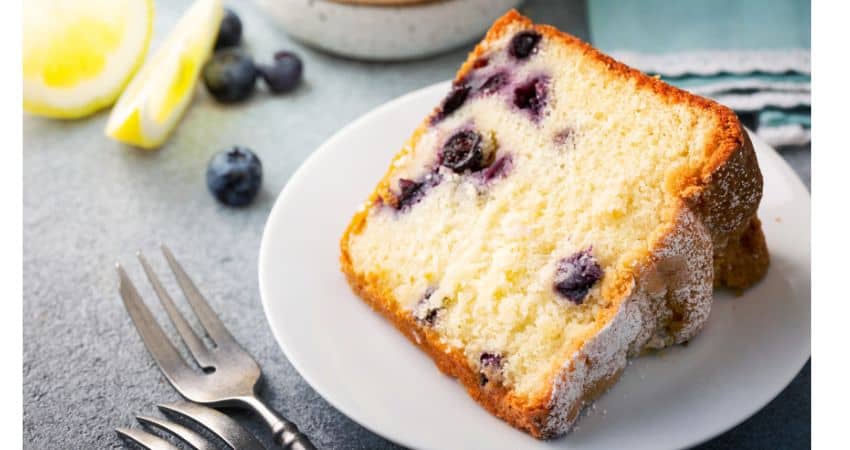Should You Thaw Blueberries Before Baking?
You can cook pies, cakes and muffins with frozen berries. But the question begs itself, should you thaw blueberries before baking?
You should thaw blueberries when preparing pancakes, waffles or anything with a short baking time. For things that need a longer baking time in the oven, like muffins and pies, you can use both thawed and frozen blueberries. Although the thawed option would work better.
This article will cover how to freeze and thaw them without messing up their texture for baking.
The Relation Between Thawing Blueberries and Baking Time

As a rule of thumb, you should go with thawed berries whenever you prepare something with a short baking time.
Why use thawed berries with a short baking time? If you toss the berries in the batter while they’re still frozen, they might not have enough time to defrost in the pan. Cold berries will prevent the surrounding batter from baking properly, leaving you with a partially raw, soggy result.
Therefore, if you’re preparing pancakes, waffles, or anything similar, it’s better to thaw the berries for a few minutes before tossing them in the batter. If you’re baking muffins, cakes or pies, both thawed and frozen berries will work. However, frozen berries are less preferred because of two reasons:
- They sink deep into the batter.
- They ‘bleed’ too much juice into the batter.
The sinking issue is self-explanatory. Frozen berries are a bit heavier than their thawed or fresh counterparts, therefore gravity pulls them down. But what about color bleeding? That’s what I’ll explain in the next section.
How Freezing Changes Blueberries
As you probably know, blueberries are full of water. They consist of 84% water, to be exact1. As you may recall from high school, water expands when it turns to ice. The expansion literally rips the blueberries from within. It ruins the intricate cellular structure, and may even burst the skin open.
Therefore, as long as the berry remains frozen, you can hardly notice any of these changes. The structural changes start unfolding as the berries warm up inside the oven. Because the cells surrounding the juice have ruptured, the berries ‘bleed’ into the batter, giving a bluish-green tint to whatever you’re baking.
Technically speaking, thawed berries will also bleed, but you can find your way around that problem with the two tips I’ll mention up next.
Tips To Keep Blueberries From Bleeding Into the Batter
Using Flour/Cornstarch
Before you fold your thawed blueberries into the batter, trying coating them with a tablespoon or two of flour or cornstarch2. Either ingredient will absorb some of the berries’ juice, so they won’t bleed much as they bake.
If you decide to go with that option, subtract the amount of flour or cornstarch you used from the amount you’ll add when preparing the food.
Rinsing the Berries
Some people like rinsing the thawed berries a few times with cold water to drain the excess juice and keep the batter looking yellow. Although this method does minimize the bleeding, it wastes too much juice.
That juice bursting in your mouth is the thing that makes blueberry muffins so tasty and irresistible!
How To Keep Blueberries From Sinking In Cake

If you’ve tried baking cakes or muffins with frozen blueberries, I’m sure you noticed the berries always end up at the bottom of every muffin. Typically, the unbalanced distribution makes the muffins soggier towards the bottom, making it a bit harder to remove them from the pan.
Some people say that coating the berries in flour solves this issue. Mainly because the berries become lighter as the flour absorbs some of their juice. This hasn’t worked out for me well. The flour does minimize color bleeding, but it doesn’t help when it comes to sinking.
How to keep blueberries from sinking in cakes or muffins? Keep blueberries from sinking by lining the muffin cups with plain batter that doesn’t contain blueberries. Add the remaining batter containing the blueberries filling the rest of the cup.
By using this method, sunken blueberries will be a thing of the past!
The Best Way To Thaw Blueberries
The best way to thaw blueberries is to place them in the refrigerator the night before. The gradual thawing will preserve some of the berries’ cellular structure, making them less likely to bleed if baking.
The next best thing is thawing them at room temperature3. That could take anywhere between 1 and 2 hours, depending on where you live.
How To Defrost Blueberries Quickly
Defrost blueberries quickly by tossing them into a bowl of cold water. The blueberries will be thawed and ready to use within 5 minutes.
Some people like using hot water to shorten the thawing time even more, but that may not be a good idea4.
Hot water will shrivel the berries and strip them of most of their juice. In addition, the warm environment may encourage bacterial growth if you leave the berries on your countertop for more than an hour.
Thawing Frozen Blueberries in the Microwave
Frozen blueberries can be thawed in the microwave by following these steps:
- Lay a paper towel on a microwavable plate and spread the berries on top.
- Don’t defrost more than 1 cup of berries at a time. Larger amounts may not thaw together evenly.
- Space the blueberries apart from each other on the plate.
- Set the microwave to the defrost setting for 15 seconds.
The berries will still look lightly frosted after those 15 seconds, that’s a good thing! Microwaving them any longer would bring about the unsightly texture changes5.
How Long Do Thawed Blueberries Last In The Fridge?
Thawed blueberries can last in the refrigerator for 1–2 weeks. It’s not recommended thawing a large amount and storing them in the fridge for later use. Blueberries are extremely delicate by nature. Therefore, refrigeration after thawing will make them too mushy.
If you have any questions about this article don’t hesitate to comment below or email us. You can find an email on our contact page.
Read Next – More Articles About Blueberries!
Can You Store Blueberries and Strawberries Together?
Strawberries vs Blueberries: Which is Better? A Comparison
The 6 Best Vegetables To Go With Blueberries
Can You Store Blueberries in Tupperware?
Can You Store Blueberries and Strawberries Together?
How to Choose Good Blueberries: The Complete Guide
Do Organic Blueberries Have Worms?
- USDA: Blueberries, raw [↩]
- BCblueberries: Five Tips for Using Frozen Blueberries [↩]
- Betty Crocker: How You Handle This Frozen Ingredient Will Make or Break Your Baked Goods [↩]
- National Center for Home Food Preservation: Thawing and Preparing Foods for Serving [↩]
- ScienceDirect: Freezing/thawing and microwave-assisted drying of blueberries (Vaccinium corymbosum L.) [↩]
